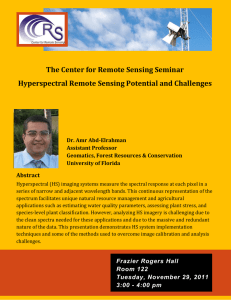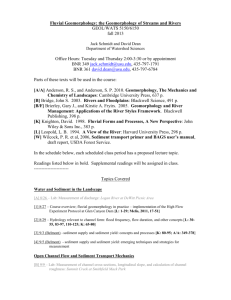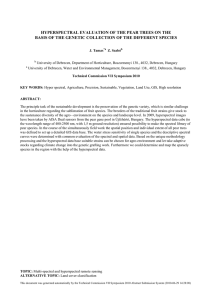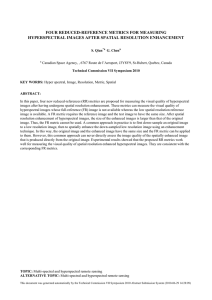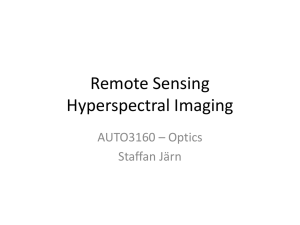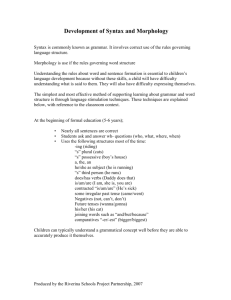Remote Mapping of River Channel Morphology
advertisement
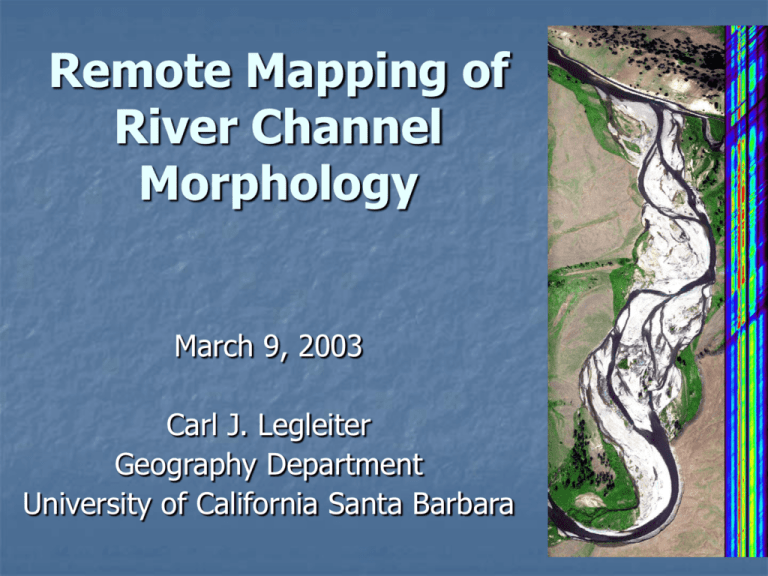
Remote Mapping of River Channel Morphology March 9, 2003 Carl J. Legleiter Geography Department University of California Santa Barbara Acknowledgements Collaborators Dar Roberts and Tom Dunne, UCSB Mark Fonstad, Southwest Texas State University Andrew Marcus, University of Oregon Robert Crabtree and Kerry Halligan, Yellowstone Ecological Research Center Annie Toth, Jim Rasmussen, Rob Ahl, Seth Peterson Funding agencies NASA Earth Observation Commercial Applications Program - Hyperspectral NASA Jet Propulsion Laboratory California Space Institute American Society for Engineering Education National Science Foundation Presentation outline Project rationale Methodology Laboratory spectra / numerical simulation Hyperspectral image analysis Radiative transfer modeling Accuracy assessment / sensitivity analysis Anticipated results Significance of river channel morphology Role of remote sensing Flexible model for estimating depth from imagery Identify potential and limitations of remote approach Broader impacts Applications in geomorphology and ecology Powerful tool for resource management River channel morphology and the role of remote sensing Channel morphology establishes physical habitat conditions influences flow processes and sediment transport responds sensitively to disturbance impacts requires an accurate, quantitative, and spatially explicit descriptive framework Remote sensing provides expanded coverage captures spatial and temporal variations allows analysis across a range of scales Spectral properties of streams: measurement and modeling Signal recorded by sensor influenced by Direct spectral measurements water depth substrate characteristics suspended sediment surface turbulence viewing and illumination geometry Depth, substrate, image geometry Numerical simulation Suspended sediment, specular reflectance Hydraulic / hyperspectral analysis Data sources Theoretical basis AVIRIS hyperspectral imagery USGS streamflow records Manning’s equation Q = AR2/3S1/2/n Radiative transfer models Solution technique Iteratively adjust model parameters to match measured discharge Model evaluation Accuracy assessment Sensitivity analyses to quantify effects of AVIRIS scenes excluded from model-building Probe-1 hyperspectral imagery and field data from Lamar River, WY suspended sediment substrate variability channel complexity sensor resolution Goal: identify appropriate conditions and define limitations Anticipated Results Laboratory spectral library Radiative transfer model for estimating depth from imagery flexible and physically-based Quantitative analysis of potential and limitations depth, substrate, image geometry critical assessment of the technique Continuous bathymetric maps detailed, spatially extensive representation of channel morphology Applications and broader impacts Fluvial geomorphology Stream ecology spatial distribution of habitat within watersheds Resource management process interactions across a range of scales inventory and monitoring in-stream flow requirements stream restoration flood hazard assessment Preservation efforts maintain geomorphic, biotic, and aesthetic integrity Conclusion: Remote mapping of channel morphology Rationale Methodology lab spectra hyperspectral/hydraulic analysis accuracy assessment Research objectives Ecological significance and vulnerability of streams Remote sensing offers synoptic perspective flexible model for estimating depth document potential and limitations Applications fluvial geomorphology stream ecology resource management
